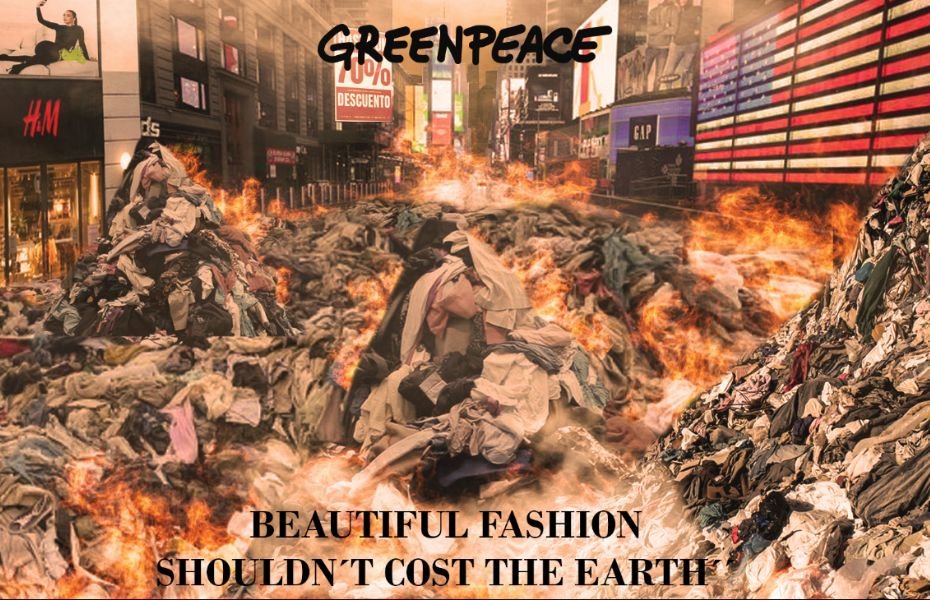In today’s world, fashion has become more accessible and affordable than ever before. The advent of fast fashion, characterized by rapid production cycles, low prices, and trendy designs, has revolutionized the way we consume clothing. However, this trend has come at a significant cost to the environment.
The Environmental Toll of Fast Fashion
Fast fashion, characterized by its rapid production cycles, low prices, and trendy designs, has revolutionized the way we consume clothing. However, this trend has come at a steep environmental cost.
These environmental impacts of fast fashion have far-reaching consequences for ecosystems, communities, and the overall health of the planet:
- Ecosystem Disruption: Water pollution from textile manufacturing can disrupt aquatic ecosystems, harming biodiversity and jeopardizing water quality for human consumption and irrigation.
- Community Health Impacts: Exposure to chemicals used in textile production can have adverse health effects on workers and communities living near garment factories.
- Climate Change Intensification: Greenhouse gas emissions from the fast fashion industry contribute to climate change, leading to rising sea levels, extreme weather events, and disruptions to agriculture.
To address the environmental impact of fast fashion, we need to shift towards a more sustainable approach to clothing consumption and production. Here are some key steps we can take:
- Buy Less and Buy Better: Instead of purchasing a large number of low-quality, trendy items, focus on buying fewer, well-made garments from sustainable brands that prioritize ethical practices and eco-friendly materials.
- Choose Sustainable Materials: Opt for clothing made from natural fibers like organic cotton, linen, or hemp, which have a lower environmental footprint than synthetic fabrics.
- Care for Clothes Properly: Wash clothes less frequently, use cold water, and air-dry whenever possible to conserve energy and extend the life of your garments.
- Repair and Mend: Instead of discarding damaged or outdated clothing, consider repairing or upcycling them to give them a new lease on life.
- Support Sustainable Brands: Research and support brands that are committed to sustainable practices, such as using eco-friendly materials, reducing waste, and ensuring fair labor practices.
- Embrace Secondhand Fashion: Consider buying secondhand clothing from thrift stores, online platforms, or consignment shops. This extends the life of existing garments and reduces the demand for new clothing.

By adopting these practices, we can collectively reduce the environmental impact of fast fashion and contribute to a more sustainable future for the fashion industry.
The fast fashion industry is a major contributor to environmental pollution and resource depletion. Here are some of the key environmental impacts associated with fast fashion:
- Water Consumption: Cotton, a primary material used in fast fashion, is a water-intensive crop. It takes approximately 2,700 liters of water to produce one cotton T-shirt. The massive production of cotton for fast fashion garments puts a strain on freshwater resources, particularly in arid regions.
- Chemical Pollution: The textile industry is a significant source of chemical pollution. The dyeing and treatment of fabrics involve the use of hazardous chemicals that can contaminate waterways and harm aquatic life. These chemicals can also leak into soil and groundwater, posing risks to human health.
- Microplastic Pollution: Synthetic fabrics, commonly used in fast fashion clothing, shed tiny fibers during washing. These microplastics end up in waterways and oceans, harming marine life and potentially entering the food chain.
- Greenhouse Gas Emissions: The production, transportation, and disposal of fast fashion garments contribute to greenhouse gas emissions, exacerbating climate change. The energy-intensive processes involved in manufacturing and transporting clothes release significant amounts of carbon dioxide and other greenhouse gases.
- Waste Generation: The fast fashion model promotes a disposable culture, leading to an excessive amount of textile waste. Millions of tons of clothing end up in landfills each year, contributing to pollution and taking up valuable space.
Reducing the Environmental Impact of Fast Fashion
As consumers, we can play a role in reducing the environmental impact of fast fashion by adopting more sustainable practices:
- Buy Less and Buy Better: Instead of purchasing a large number of low-quality, trendy items, focus on buying fewer, well-made garments from sustainable brands that prioritize ethical practices and eco-friendly materials.
- Choose Sustainable Materials: Opt for clothing made from natural fibers like organic cotton, linen, or hemp, which have a lower environmental footprint than synthetic fabrics.
- Care for Clothes Properly: Wash clothes less frequently, use cold water, and air-dry whenever possible to conserve energy and extend the life of your garments.
- Repair and Mend: Instead of discarding damaged or outdated clothing, consider repairing or upcycling them to give them a new lease on life.
- Support Sustainable Brands: Research and support brands that are committed to sustainable practices, such as using eco-friendly materials, reducing waste, and ensuring fair labor practices.
- Embrace Secondhand Fashion: Consider buying secondhand clothing from thrift stores, online platforms, or consignment shops. This extends the life of existing garments and reduces the demand for new clothing.
The fast fashion industry has transformed the way we consume clothing, but it has come at a significant environmental cost. By adopting more sustainable practices, such as buying less, choosing sustainable materials, and supporting ethical brands, we can reduce our impact and contribute to a more sustainable fashion industry. By making conscious choices, we can minimize the environmental footprint of our clothing and protect the planet for future generations.








